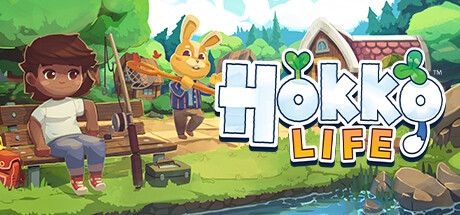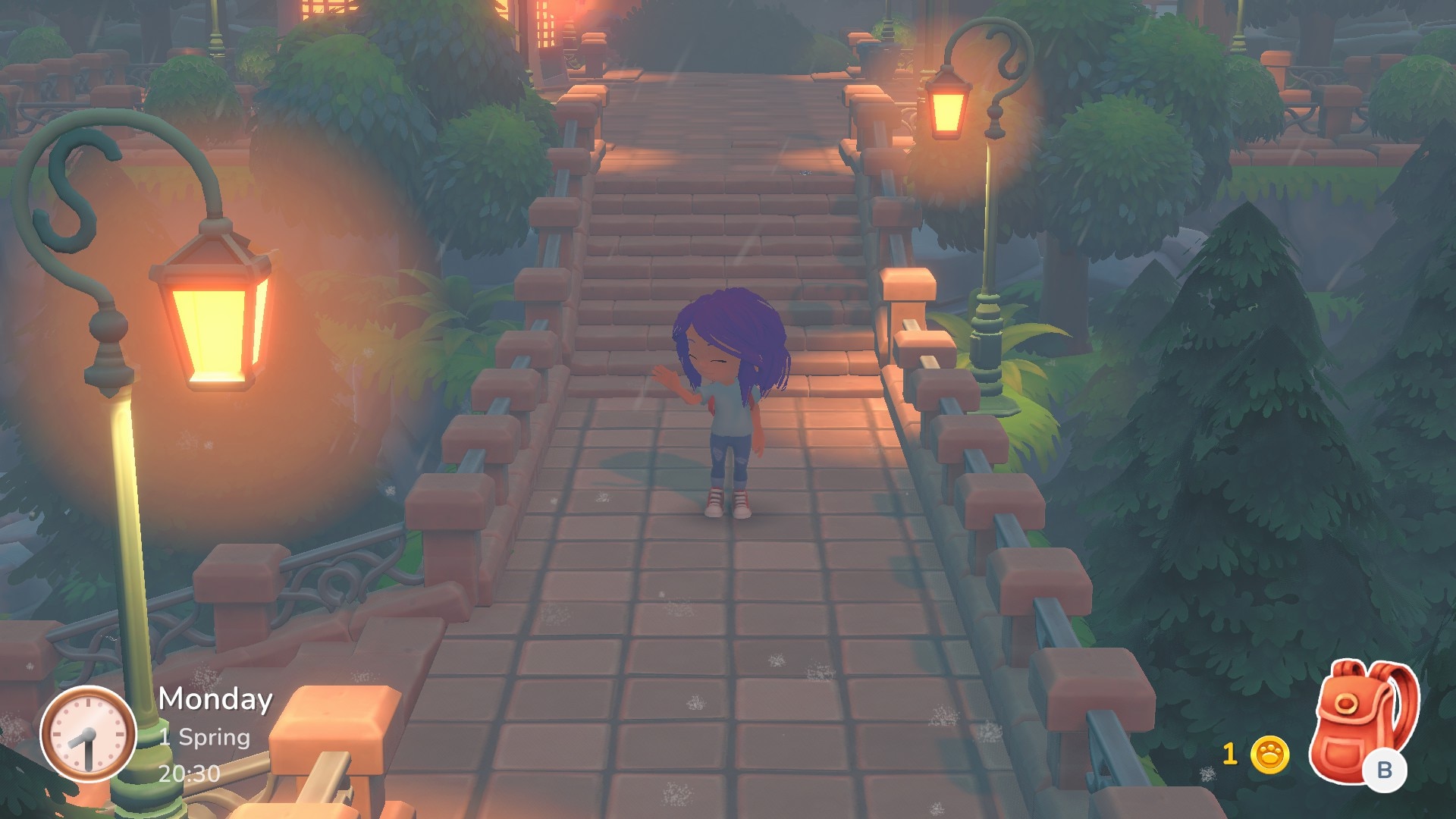
Hokko Life
Hokko Life is a cozy game that is often compared to Animal Crossing / Harvest Moon / Stardew Valley. However, even if it fits into the genre through its game design, mechanics and adorable graphics, I dare say that the gameplay is slightly different than what you’d expect from a farming / life sim. Hokko Life is more of a crafting / building sim than anything else, and because it doesn’t have a story, nor a system of building up relationships with the other characters (nor romance for that matter), the end game goals turn into unlocking as many of the crafting designs possible, amassing as many resources as needed to support the crafting process, and ultimately shaping / decorating the game’s world with the crafted items, according to your desires. It’s certainly a fun and very chill game to play for fans of the genre, but it does have its own shortcomings.

The game’s main focus is expanding a small town into a thriving community. This is done by building houses, decorating and furnishing them, and then inviting potential characters to move in. In order to craft furniture or clothing items you’ll need raw resources, while building a house also costs coins. As such, most of the time is spent gathering the materials needed for your next objective, which requires various amounts of grinding for resources, depending on what you are trying to build. The stone and minerals respawn daily, while the flowers or trees you harvest take a few days to regrow but you will also be able to plant new ones in order to maximize your throughput. Coins can be obtained by completing requests from the villagers, catching insects / fish and selling them in the town’s shop, or even selling the items you produced.

Hokko Life takes crafting to a whole new level. While in similar games the crafting chain consists of 2-3 steps (you create some intermediate products like planks from harvested wood, then a piece of furniture using these planks), in Hokko Life you will be able to unleash your full creativity by customizing the crafted products (including full buildings) as you see fit. Each of their components can be readjusted, moved, resized, replaced or deleted, you can add new shelves to a bookcase in any position you desire and so on. There are limitless combinations of what you can create in-game. Some of the basic blueprints for these items are unlocked by completing requests from the NPCs, while others are bought with coins. The items created can all be decorated with all sorts of metallic or non-metallic ornaments, and each of their composing elements can also be painted. The creations you make can then be showcased in your own shop back in the main city, which other players can visit in order to download your designs and end products. The community’s creativity is tremendous, and by browsing the stores even briefly using the identity codes posted on the Steam forums or on Discord, you can easily find lots of artistic items that are basically miniature masterpieces.

I find that in Hokko Life, some of the features are implemented better than in other similar games. For example, there is no tool durability – it’s refreshing to not have to worry about how many charges you can use a tool before having to replace it. Secondly, there is no energy bar that limits your actions. The in-game time flows rather slowly, and during a whole work day you have plenty of room to engage in a lot of activities. I’ve never felt restricted by what I was able to do during a full day, because I was always able to harvest to my heart’s content (even the entire map, if I so wanted), plus complete a couple of villagers’ requests, hunt for a few insects or fish for some extra pocket money and take part in small competitions – all of these until the day ended, almost on a daily basis.

The progress in Hokko Life is incremental, and gated by so-called “Mayor Merits”. These are sequential challenges that have specific mixed requirements and which unlock a certain perk that makes your gameplay a bit easier later on. The Mayor Merits serve both as a motivation for the player to spread their efforts over multiple types of activities in parallel, but also as a guide on how to best progress through the game. On the downside, you can’t really see what benefits your next unlock will bring you, so you don’t exactly know which of the several possibilities to prioritize, and some of the requirements are not clearly explained.

Hokko Life has a lot of positives, but unfortunately several negatives too, apart from various visual and gameplay bugs that persist even after the game exited its early access phase. For starters, there should be better guidance for the player, and not only at the beginning of the game but also whenever a new mechanic is unlocked. Although a tutorial exists and it’s pretty decent, there are some object interactions that are quite unintuitive and these are not covered at all. Aside from that, some UI elements could be slightly improved and made more accessible (for example, it doesn’t make sense that you can progress through the dialogue using the keyboard primarily, but selecting dialogue options works only by using the mouse). The fishing minigame is likely the least entertaining activity because the fish don’t always take the bait even if they are in its proximity. The characters are pretty one-sided and have only very few lines; as you unlock more characters you can also see that there are some interactions between them based on their personality type, but these are quite shallow and overall uninteresting.

The NPC’s requests are usually a hit or miss. At the beginning of the game they were rather slow to come in, but as I progressed and more people moved into town, my days started to be really busy, filled with plenty of tasks. However, after another few days, they stopped coming altogether, and I had to start manually hunting down every character on a daily basis to see if they actually wanted me to do something for them or not. The notice board – which in theory helps gather requests – also remained sparsely populated (1-2 entries per week). These requests are usually in the form of fetch-quests or fixing some furniture items, thus they can quickly become repetitive for some. I found them rather interesting because they helped me progress through the game by forcing me to unlock new designs. However, the biggest challenge was to find the quest giver (they move around the world and there is no quick way to locate them). After many hours of gaming you can unlock a map, but it’s not extremely useful because it displays the NPCs only in the region you’re currently in and only if they’re roaming outside buildings. It’s funny though that it’s so hard to find them even on a little map as Hokko Life’s is (there are only 13 areas to explore, and they’re rather contained, each taking a few screens).

Hokko Life provides a relaxed, pressure-free experience. Its’ world, with beautiful pastel visuals and slow-paced gameplay, is particularly welcoming, yet the game often felt that it needs more substance for me to consider it truly great, aside from the aforementioned bug fixes and accessibility improvements. In its current state, it’s a decent sim and the negatives aren’t particularly bothersome, but it still has a long way to go. It has huge replayability value, not only because it doesn’t actually have an end game (you just keep building and crafting ad infinitum, plus the map layout is randomly generated for each playthrough).

Having it featured in the Humble Choice January 2023 made it accessible to a lot of people, which is in my opinion a really good thing, because the game is certainly worth trying.